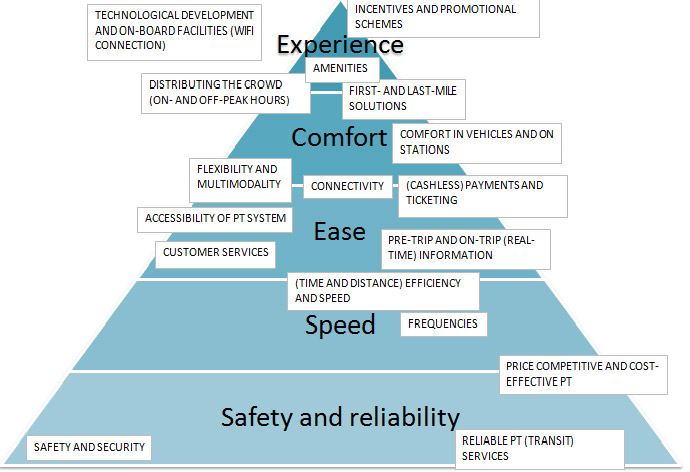The report on deliverable 1.2 provides the project with an applicable passenger/customer classification, based upon an extensive review of existing literature on different ways of defining customer groups and their needs, both in PT and in other comparable sectors.
According to the TCRP handbook on market segmentation in the PT sector, market segments “consists of groups of people or organizations that are similar in terms of how they respond to a particular marketing mix or in other ways that are meaningful for marketing planning purposes” (Elmore-Yalch, 1998). Market segmentation allows Public Transport Authorities and Public Transport Operators to approach different segments of customers in an effective manner by better satisfying the customers’ needs.
In the report five segmentation bases have been chosen:
- Geographic segmentation (location, density, accessibility etc.)
- Demographic segmentation (age, gender, ethnicity etc.)
- Socio-economic segmentation (income, education, occupation etc.)
- Behavioural segmentation (user status, loyalty, frequency etc.)
- Psychographic segmentation (personal characteristics, attitudes and beliefs, lifestyles etc.)
Based on these variables an extensive literature research has been conducted. For every segmentation base variables have been chosen to make the segmentation measurable, accessible, substantial, actionable and differentiable. According to these variables different customer groups and their needs have been identified. For more information about the customer groups see the report “D1.2 Report on analysis of customers’ groups and users’ needs per customer group”.
In this report the customer needs are aggregated and graphically shown in Maslows’ pyramid. Maslows pyramid was initially used by van Hagen & Bron (2013), to gain more insight into the customer experience in the emotional context, like deeper desires, motivations and expectations (van Hagen & Bron, 2013). Analysis in our current report have shown that as long as the subjects in the bottom of the pyramid are sufficiently met customer expectations, the needs are shifting towards the top of the pyramid. The top of the pyramid contains more ease, comfort and customer experience.

